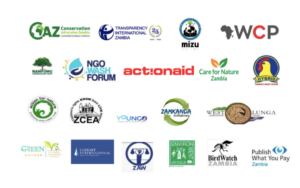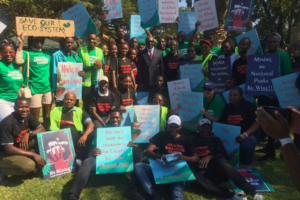Africa’s Carbon Conundrum: Can Offsetting Projects Deliver Sustainable Development?
Carbon credits represent the reduction, sequestration, or avoidance of one ton of carbon dioxide or its equivalent in greenhouse gas emissions. These credits are generated through projects like renewable energy, reforestation, and energy efficiency initiatives that reduce or remove greenhouse gases. Carbon offsetting involves purchasing these credits to compensate for one’s own greenhouse gas emissions, allowing individuals, businesses, and governments to neutralise their carbon footprint.
The concept of carbon credits originated with the Kyoto Protocol, an international agreement focused on reducing greenhouse gas emissions. While the Kyoto Protocol established a compliance-based carbon market, the voluntary carbon market (VCM) has seen significant growth in recent years. Africa has increasingly become a key player in the carbon credit market, with initiatives such as the Africa Carbon Markets Initiative (ACMI) aiming to leverage the continent’s potential for carbon sequestration through reforestation, sustainable agriculture, and renewable energy projects.
Carbon Credits in Africa
Africa offers unique opportunities for carbon credit generation due to its vast land resources and growing renewable energy sector. However, challenges persist, including the need for robust monitoring, reporting, and verification (MRV) systems, and ensuring that local communities benefit from carbon credit projects.
Carbon credits dangle a promising carrot – revenue for developing nations to tackle climate change. This financial incentive could unlock a treasure chest of additional funding for clean energy and sustainable development projects across Africa. Plus, the market-based approach of carbon markets could spark a wave of innovation and efficiency in slashing emissions. And yet, there is a flip side. Some fear carbon credits might be a greenwashing tool, allowing companies to indulge in a feel-good purchase instead of genuinely cutting their emissions. Another concern is “additionality”. How do we guarantee these projects actually reduce carbon beyond what would have happened anyway? And let’s not forget the potential for land grabs and displacement of local communities if these projects aren’t managed with care..
Opportunities and Challenges in Carbon Credit Projects
Africa’s abundant forests and lands offer a prime location for carbon-capturing projects like reforestation. The continent’s sunshine and wind power potential add another weapon to the climate fight – renewable energy. These projects can create jobs in rural areas and promote sustainable development.
However, the expertise needed to develop, monitor, and verify carbon credit projects isn’t always readily available in many African countries. This lack of capacity can stifle progress and hinder the realisation of the continent’s full potential. Additionally, data on carbon stocks, land use, and emissions can be scarce, making it difficult to accurately assess the impact of these projects. Another challenge lies in accessing the international carbon markets. Complex regulations, coupled with high transaction costs and a lack of liquidity, can create a barrier for African projects. Ensuring that local communities and indigenous peoples benefit fairly from these initiatives also presents a significant obstacle. Without proper safeguards, these projects risk becoming a one-sided affair, enriching corporations while leaving local populations behind.
To maximise the benefits of carbon credit projects in Africa, several strategies can be adopted:
- Capacity Building: Invest in training and capacity-building programs for local communities and governments.
- Data and Technology: Improve data collection and analysis through technology and partnerships.
- Market Development: Support the development of regional carbon markets to increase liquidity and reduce transaction costs.
- Fair Benefit Sharing: Prioritize local community involvement and benefit-sharing mechanisms.
- Policy and Regulatory Support: Create enabling environments through supportive policies and regulations.
Successful Carbon Credit Projects in Africa
Africa boasts a vast potential for carbon credit generation due to its abundant natural resources and growing renewable energy sector. Several successful projects highlight the continent’s potential in this space. For example, Ethiopia’s Humbo Assisted Natural Regeneration Project has successfully restored 2,700 hectares of land in just four years, serving as a model for farmer-managed regeneration efforts in neighboring countries like Niger, Chad, and Burkina Faso. Similarly, Kenya’s Clean Development Mechanism (CDM) Project: This project led to the addition of 35 megawatts of electricity to Kenya’s national grid and issued over 230,000 carbon credits. It also trained over 300,000 smallholder farmers on sustainable land management practices
The allure of carbon offsets is undeniable, but a critical eye is essential. They should be a supporting act, not the main show, in the fight against climate change. The real prize lies in aggressively reducing greenhouse gas emissions in the first place.




